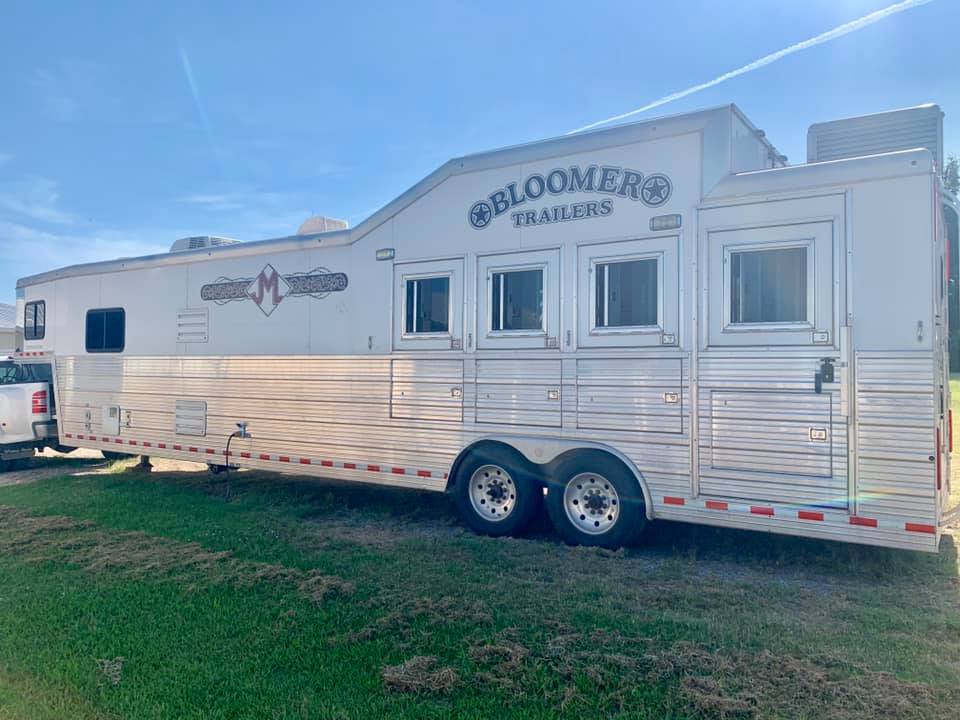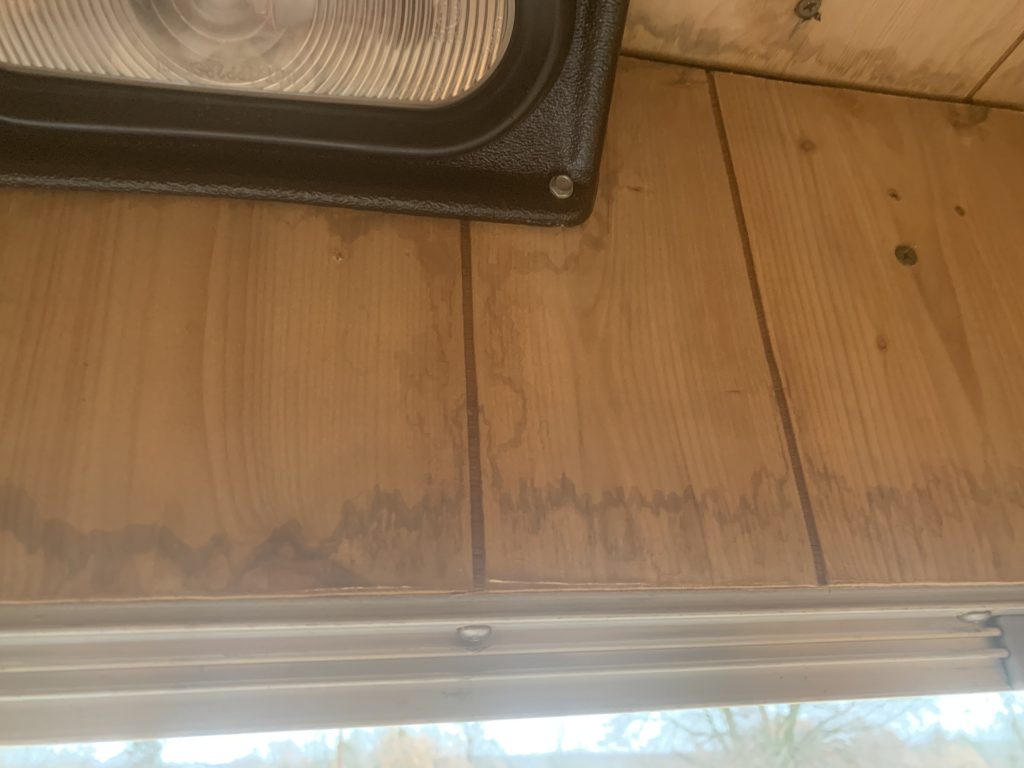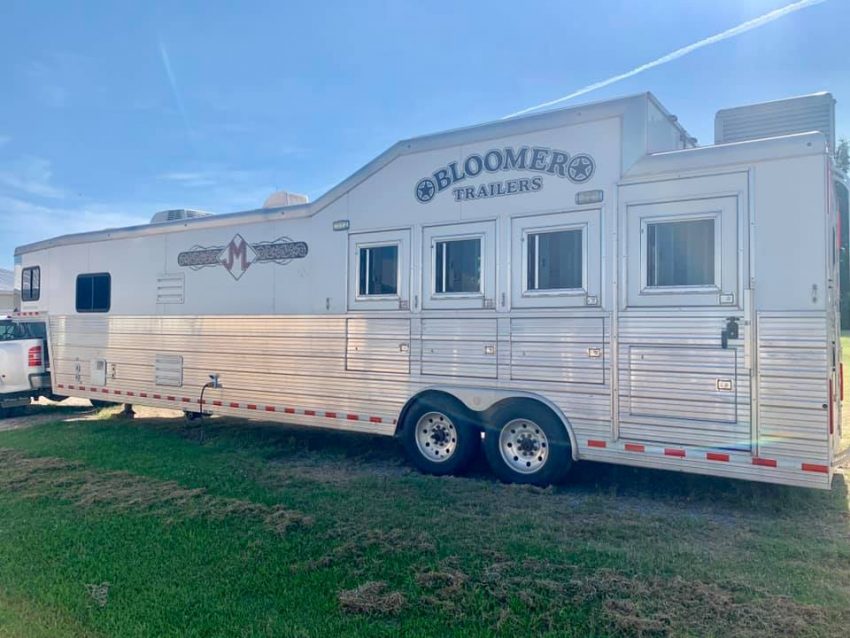One of the most important possessions a rider can have is reliable transportation. With so many options out there, how do you know what is the right one for you?
In this two-part series, we spoke with some extras to find out what is most important. They all agreed that the “right” rig is the one that fits your needs, wants, and budget. In this issue of WorldWide Slide, we’ll focus on the trailer.

The Trailer
Thanks to the internet, most people already have an idea of what style of trailer they want before they even set foot on a dealer’s parking lot. “Usually, the first question I’ll ask a customer is if they have seen anything online that interests them, and then get them to expand on that,” noted Clint Martin, Sales Representative for National Trailer Source. “I’ll find out what style they like, what kind of loading options they’re looking for, and how many horses they plan to haul. The answers to those questions can push us
in the right direction.”
According to Martin, one of the most important factors he has to determine is if the customer plans to use their trailer for overnight stays, necessitating a weekender or living quarters. “The next question is how many people will be staying with them, the ages, and how long they’ll be staying in it on each trip. Then we can determine what size they need,” he said.
With a multitude of trailer brands to choose from, it’s hard to make a black-and-white list of what each size of living quarters can accommodate, but there are a few guidelines. “If someone needs a slide out for extra room, that can normally be achieved with a nine-to-10-foot short wall. If they need a sofa and dinette for more seating areas, that will be a 13.5-foot minimum short wall. Not only does it give everyone a spot to sit, but they can also use that for additional sleeping areas,” he explained.

Of course, the truck that pulls the trailer might be a limiting factor. “It’s not really a question of if a truck can pull the trailer, it’s about shutting your rig down. For customers with half-ton pickups, I’ll steer them towards smaller trailers, such as a two-horse,” Martin said. “Once we get to the three-quarter ton diesels, we can expand on that quite a bit. With a three-quarter ton, I’d be comfortable with a three-horse with an 11-foot short wall, or a four-horse with a nine-foot short wall. A three-horse with a 13-foot short wall is right on the line.”
For longer and heavier trailers, Martin recommends moving up to a one-ton dually or larger. Living quarters aside, what’s the better choice between a bumper pull and a gooseneck? Well, that depends. “The main thing is the ease of use with a bumper pull. They’re easy to hook up, and most trucks already have a hitch for a bumper pull. If you don’t already have a hitch in your bed, that’s another expense when buying a gooseneck,” he said. “The main thing is that bumper pulls are typically cheaper, and you can pull them just about anywhere. They’re great runaround trailers. I have customers who have both – a small bumper pull for quick runs, such as a local event with a horse or two or a trip to the vet, and then a big living quarters trailer.”
Finally, Martin cautions that any trailer needs maintenance, and that’s another cost the customer should consider. Regular, annual maintenance should include packing bearings, ensuring brakes are working properly, as is all lighting and wiring, and that the roof, windows, and doors are properly sealed.
Wintertime maintenance for living quarters trailers is especially important. “If you’re not going down the road and using your trailer throughout the winter, make sure to winterize them. There are plenty of videos online, and most RV shops and trailer dealerships can do it for you if it’s not a job you want to tackle,” Martin said. “Failing to winterize your trailer can be a huge financial impact. It’s a big deal if a waterline freezes and cracks; and if it’s not found, you can get major water damage and may have to gut
your trailer to fix it.”

Although buying a trailer from a reputable dealer is simple and safe, often times people might see one that catches their eye from a private seller. That can be a great find, as long as you give the trailer a good inspection. “The first thing is to take in the overall appearance of a trailer. You can typically look at one and can see if the owner has taken pride in it and kept up with maintenance,” Martin said.
Then, he said, it’s time to look at the structure of the trailer. “You want to get underneath it to make sure the axels look good. It can be hard to look at one and see if it’s tweaked, but check out the tires for uneven wear. They’ll tell you if something is wrong. Then check all the welds under the tongue and the general frame of the trailer,” he said.
The next search should be for water damage. Martin explained, “Feel around with your feet around the entry door, vanity, shower, and toilet. See if there are stains or mildew. You can feel with your hands around the roof vents, and check the skylight in the shower if it has one to see if it has been broken. These are big deals that can really affect the value of that trailer.
“Make sure to check all the appliances in the living quarters. Fire up the generator and let it run for a while to make sure it is working properly. It’s a big deal. You don’t want to take your new rig for
a trip to find out something isn’t working like it should.”
For anyone who has ever bought or sold a trailer, pricing can be particularly difficult. According to Martin, that struggle isn’t limited to the average consumer. “I think there is a blue book for trailers floating around out there, but there are so many options on trailers it is hard to be accurate. One of the best resources I can point someone to is HorseTrailerWorld.com. Trailers can be sorted, and you can dial down on what you want and get some comps.” He laughed, and added, “Even though we have been in business for a long time and have a huge database of what we’ve sold and for how much, it’s still a great resource for us as a dealership, especially for trailers we don’t typically sell.”

